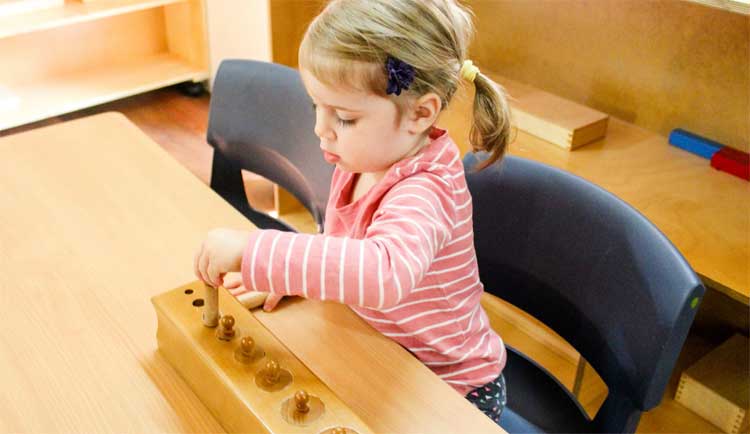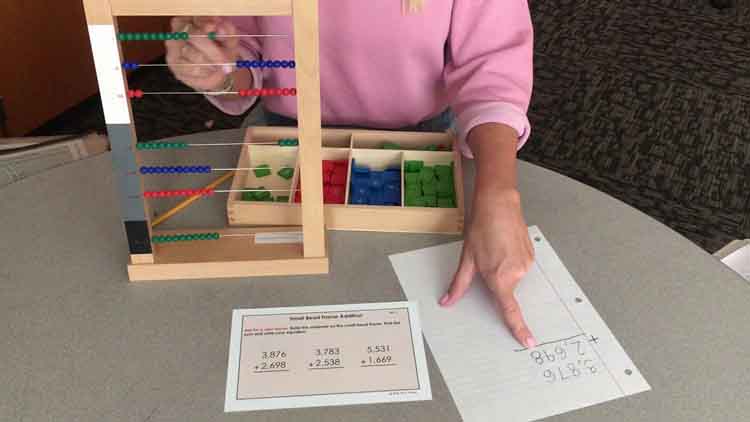Montessori materials are designed with precision to foster cognitive, sensory, and physical development in children. Among these, knobbed cylinders hold a prominent place for their ability to engage young learners and promote a range of cognitive skills. This article explores the cognitive benefits of manipulating knobbed cylinders and how they contribute to a child’s holistic development.
What Are Knobbed Cylinders?
Knobbed cylinders are a Montessori material made up of wooden blocks containing ten cylindrical pieces of varying diameters and heights. Each cylinder has a small knob on top, allowing children to grasp and manipulate them easily. These cylinders fit into corresponding holes in the block, which vary incrementally in size, challenging the child to match each cylinder to its appropriate slot.
1. Enhancing Problem-Solving Skills
One of the primary cognitive benefits of knobbed cylinders is their ability to encourage problem-solving. As children handle the cylinders, they must determine the correct order and placement of each piece based on its size and shape. This trial-and-error process teaches them to:
- Analyze differences and similarities between objects.
- Use logical reasoning to arrive at solutions.
- Persist through challenges, building resilience and focus.
Through repeated practice, children refine their ability to think critically and make decisions.
2. Developing Spatial Awareness
Manipulating knobbed cylinders helps children develop spatial awareness by encouraging them to recognize and understand relationships between objects in three-dimensional space. As they compare the size and height of each cylinder to its corresponding hole, they gain a deeper understanding of:
- Size gradation and sequencing.
- Proportions and dimensions.
- How objects interact in physical space.
This foundation is essential for later mathematical concepts such as geometry and measurement.
3. Refining Visual Discrimination
Knobbed cylinders are designed to refine a child’s visual discrimination skills, which are crucial for identifying differences in size, shape, and form. By observing the subtle variations between cylinders, children learn to:
- Differentiate between larger and smaller objects.
- Recognize patterns and sequences.
- Pay close attention to details.
These skills are foundational for tasks such as reading, where visual discrimination is needed to distinguish between letters and words.
4. Supporting Concentration and Focus
The task of fitting cylinders into their corresponding holes requires sustained attention and concentration. As children work with the material, they naturally develop the ability to focus for longer periods. The structured and repetitive nature of the activity helps them to:
- Tune out distractions.
- Engage in deep, purposeful work.
- Build a sense of accomplishment and pride in their efforts.
5. Strengthening Fine Motor Skills
While the primary focus of knobbed cylinders is cognitive development, they also play a significant role in enhancing fine motor skills. The small knobs on the cylinders are designed to promote the pincer grip, which is essential for writing and other precise movements. Additionally, the act of lifting, grasping, and placing the cylinders strengthens hand muscles and coordination.
6. Encouraging Independence
One of the core principles of Montessori education is fostering independence. Knobbed cylinders are self-correcting materials, meaning children can identify and fix their mistakes without adult intervention. This autonomy empowers children to:
- Take ownership of their learning.
- Build self-confidence and a growth mindset.
- Develop a sense of responsibility for their actions.
7. Preparing for Mathematical Concepts
Knobbed cylinders provide a concrete introduction to abstract mathematical ideas. By manipulating the cylinders, children experience:
- Gradation: Understanding incremental changes in size and quantity.
- Sequencing: Arranging objects in logical order.
- Patterns: Recognizing and creating systematic arrangements.
These experiences lay the groundwork for future learning in arithmetic, measurement, and geometry.
8. Promoting Sensory Integration
Knobbed cylinders engage multiple senses, which enhances sensory integration and cognitive development. Through touch, sight, and movement, children:
- Develop a deeper understanding of their environment.
- Enhance hand-eye coordination by aligning visual input with physical actions.
- Build neural connections that support overall cognitive growth.
Practical Tips for Using Knobbed Cylinders
To maximize the cognitive benefits of knobbed cylinders, consider these practical tips:
- Demonstrate First: Show children how to use the material by carefully placing and removing the cylinders.
- Allow Independence: Encourage children to work at their own pace without interference, fostering autonomy and self-correction.
- Use Extensions: Once children master the basic activity, introduce variations, such as arranging cylinders in reverse order or using a blindfold to enhance tactile skills.
- Provide a Calm Environment: Ensure the learning space is quiet and free from distractions, allowing children to concentrate fully.
Knobbed cylinders are a versatile Montessori material that offers a wealth of cognitive benefits. From developing problem-solving skills and spatial awareness to refining fine motor skills and preparing for advanced mathematical concepts, these simple tools play a vital role in early childhood development. By incorporating knobbed cylinders into a child’s learning journey, parents and educators can nurture essential skills that will serve as a strong foundation for future growth and success.
Whether in a Montessori classroom or a home learning environment, knobbed cylinders provide children with the opportunity to explore, discover, and thrive—one cylinder at a time.
Content prepared by: Pratheek
Contact no: +91 98468 08283




